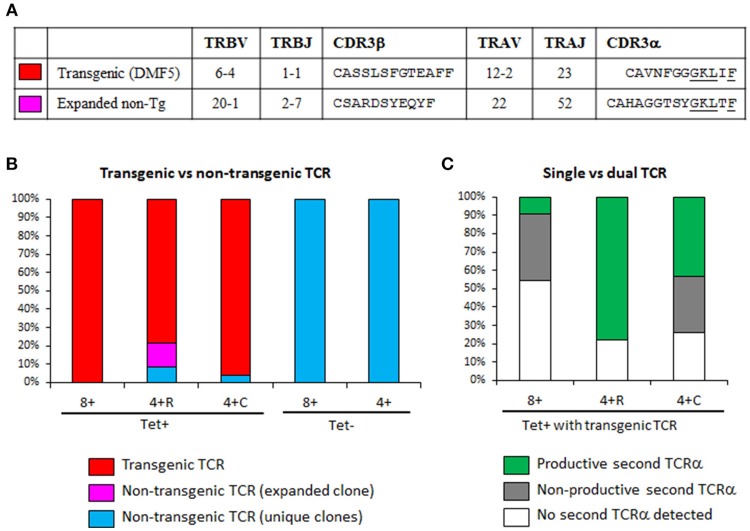Figure 7.
Transgenic T cells expressing a productive second TCR are more likely to become CD4+. (A) TCRα and TCRβ usage of HLA-A2/MART1-reactive TCRs repeatedly identified by single cell TCR sequencing. The transgenic TCR is the DMF5 clone introduced by lentiviral transduction; while the expanded non-transgenic TCR was from a Tet-binding CD4+ T cell clone, identified three times in a sample of 23 cells. CDR3 homology that might contribute to similar binding to MART1 Tet is underlined. (B) Percentage of cells expressing the transgenic TCR (clone DMF5) or a non-transgenic TCR in sorted T cell populations. (C) Percentage of cells with transgenic TCR that express a productive second TCRα, a non-productive second TCRα, or had no second TCRα detected (the last two equivalent to single TCR). Lack of two productive TCRβ was used to exclude the possibility of having two T cells in the same well. The efficiency of TCR amplification was somehow low in Tet+ CD8+ T cells (11/24), but high in other subsets: Tet+ CD4+ CD25+ CD127− (23/23), Tet+ CD4+ CD25− CD127+ (24/24), Tet-CD8+ (10/12), and Tet− CD4+ (12/12). The few Tet+ cells that were not TCR-transgenic were not included in this analysis as to not confound the results. 4 + R, CD4+ CD25+ CD27− (regulatory); 4 + C, CD4+ CD25− CD127+ (conventional).

